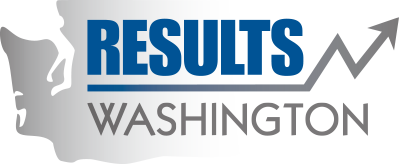Archived: Contaminated Brownfield sites returned to economically productive use
The citizens of the State of Washington put together a referendum to create a cleanup law in this state. The law (Model Toxics Control Act) begins with these words: “Each person has a fundamental and inalienable right to a healthful environment, and each person has a responsibility to preserve and enhance that right. The beneficial stewardship of the land, air, and waters of the state is a solemn obligation of the present generation for the benefit of future generations.”
Contaminated sites that are cleaned up and returned to economically productive use are a large subset of the state’s overall group of site cleanups. Also referred to as “brownfields,” these sites may be abandoned or underused properties where there may be environmental contamination. Redevelopment efforts are often hindered by the liability for the cleanup or the uncertainty of cleanup costs.
In addition to cleaning up the environment, these cleanups can create both jobs and a healthier community. In the recent Second Engrossed Second Substitute Senate Bill 5296, the Legislature wants Ecology to use the cleanup process to leverage more economic development where appropriate. Ecology found that 80 jobs are created for every $1 M spent on cleanups. These are direct and indirect jobs linked to a cleanup (MTCA Remedial Action Grants Alternative Financing Evaluation, January 2010). For the 2015-2017 biennium, there will be $171.8 M in funding for cleanups around the state. Job creation includes both short-term construction and cleanup jobs and long-term on-going jobs.
Cleanups are required when contaminates are at levels that are not safe for human health and the environment. Cleaning up these contaminated properties supports the development of environmentally and economically sustainable communities. Contaminated site cleanup actions have for example fostered the redevelopment of:
- Thea Foss Waterway in Tacoma, attracting new life and vibrancy into the City’s downtown corridor.
- City of Palouse with a cleanup to help revitalization the city and enhance the Palouse riverfront by improving public access and connectivity with downtown.
- The Town of Skykomish by cleaning up Bunker C diesel under the town and addressing the contamination in the Skykomish River in this tourist community close to Stevens Pass.
As of January 2008, 3,646 sites have been cleaned up and it is estimated that 1,117 of these sites have also been returned to economically productive use.
Based on this rate of performance, Washington Department of Ecology estimates we will meet the target of 1,090 additional sites (starting in 2013) cleaned up by December 2016.
Sites that have completed an integrated planning process are getting their sites cleaned up 50% faster than the typical cleanup. Other states have asked for information about this grants program.
Washington’s Department of Ecology has a number of initiatives underway to achieve this metric target. They are as follows:
- Ecology is working as part of the “Washington Brownfields Coalition” to provide technical assistance and regulatory oversight for cleanups that are funded in part by the Department of Commerce Brownfields loans or grants. This is in partnership with King County/City of Seattle, City of Tacoma, and the City of Spokane.
- Ecology continues to work with the Department of Commerce to leverage Commerce’s Brownfields Revolving Loan Funds with Ecology Remedial Action Grants to provide cleanup funding to local governments engaged in brownfield redevelopment projects.
- Ecology and Commerce work closely with the U.S. Environmental Protection Agency and routinely collaborate on strategies to assist communities.
If you’d like more information or would like to become involved in these site cleanups, visit:
General information can be found at https://ecology.wa.gov/Spills-Cleanup/Contamination-cleanup.
Brownfield information can be found at https://ecology.wa.gov/About-us/How-we-operate/Grants-loans/Find-a-grant-or-loan/Integrated-planning-grants.
Current site cleanup information can be found at https://www.ecology.wa.gov/Regulations-Permits/Guidance-technical-assistance/Site-Register-lists-and-data.
